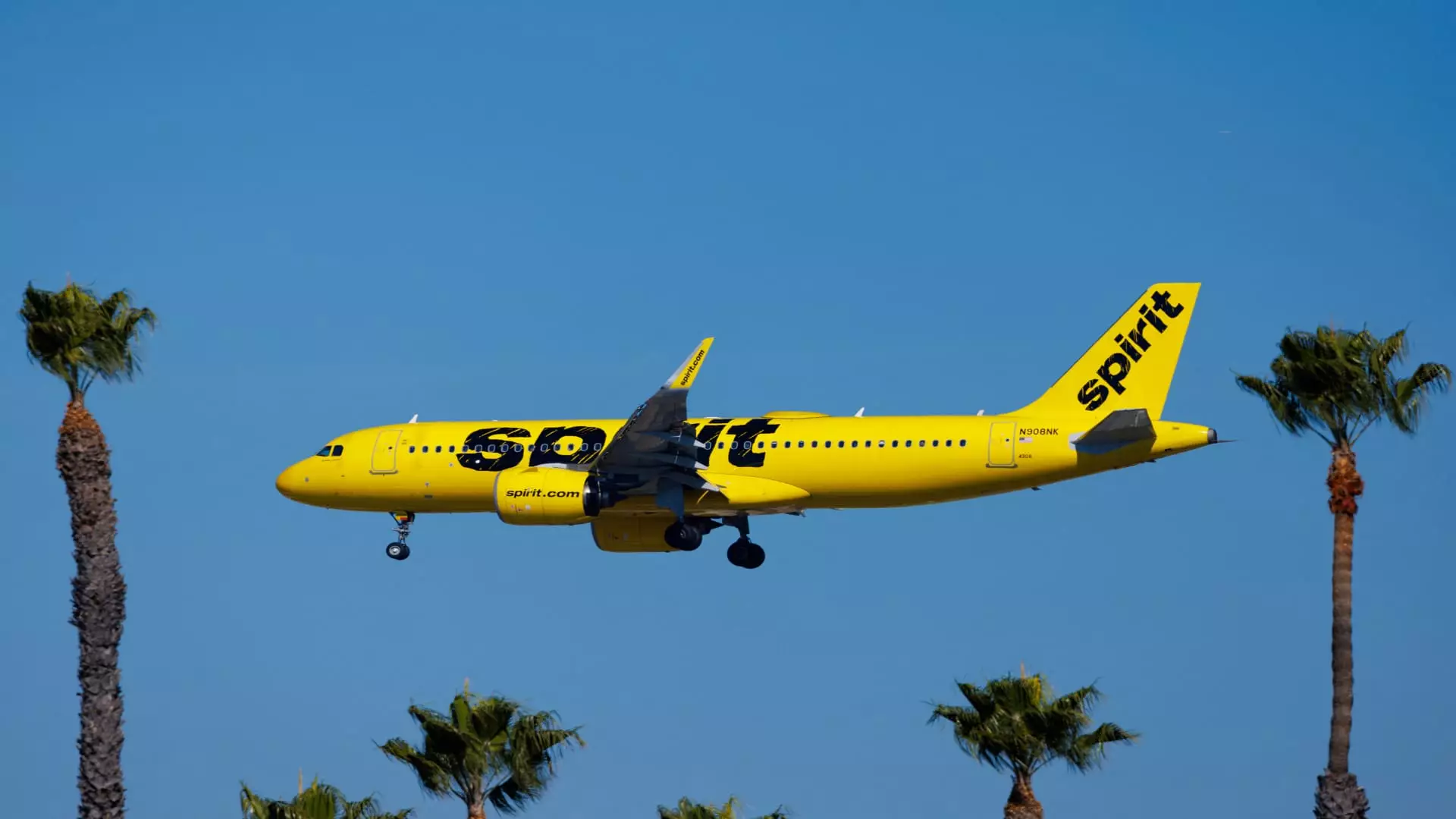Spirit Airlines, once a beacon of affordable air travel, is confronting an existential crisis that has sent its shares plummeting to unprecedented lows. Recently, reports emerged indicating that the airline may be exploring the possibility of filing for Chapter 11 bankruptcy protection, a move that underscores the severe financial turbulence the carrier is experiencing. With an immediate deadline to renegotiate over $1 billion in debt looming this month, the stakes for Spirit couldn’t be higher.
The descent from a profitable budget airline to one on the brink of bankruptcy is a dramatic twist in the company’s narrative. Before the onset of the COVID-19 pandemic, Spirit was known for its low fares and punctual service, appealing to a segment of travelers looking for cost-effective options. However, the airline’s minimalist service model soon transitioned from a strategic advantage to a liability. As humorists and late-night talk show hosts began to highlight the airline’s struggles, the once-cherished brand began to lose its luster, especially in the eyes of consumers.
Compounding Spirit’s woes is the competitive pressure exerted by larger airlines. These traditional carriers, who were at one time dismissive of Spirit’s business model, are now mimicking its strategies with their own bare-bones fares. This has eroded Spirit’s ability to attract price-sensitive customers, who now have a wider range of low-cost options to choose from. Moreover, early in the year, a federal judge’s ruling against Spirit’s sought-after acquisition by JetBlue Airways under antitrust regulations left the airline isolated, unable to leverage partnerships to bolster its competitiveness.
The impact of the pandemic on travel patterns has also played a significant role. As consumer preferences shifted, Spirit has had to contend with a series of challenges ranging from an engine recall affecting its fleet to rising operational costs. The failed merger with JetBlue not only thwarted Spirit’s growth aspirations but also left the airline scrambling for solutions. The pressure intensified as Spirit reported significant financial losses—almost $193 million in just the second quarter of this year—adding further stress to an already beleaguered management team.
In a desperate bid to stabilize its finances, Spirit has implemented a series of austerity measures. This includes reducing capacity growth by approximately 17% for the final quarter of the year, deferring aircraft orders, and even furloughing pilots. Airline analyst Brandon Oglenski characterized these steps as a necessary response to the hashed-up competitive environment, pointing out their importance in advocating for a sustainable operational framework.
Spirit’s leadership, however, remains optimistic. CEO Ted Christie assured staff that the airline is committed to finding ways to restructure its debts while reinforcing its competitive standing. His message reflects a recognition of the uphill battle ahead but also an insistence on a future that could be repaired through strategic navigation of the current crisis. Engaging with bondholders is a step in this direction, as the airline aims to renegotiate terms that would allow it to weather this rough patch.
On a day of reckoning, Spirit Airlines saw its stock plummet by more than 24%, closing at a record low of $1.69. This daunting statistic is exacerbated by the fact that Spirit’s shares have nearly decreased in value by 90% this year alone. In stark contrast, shares of Frontier Airlines—once a prospective merger partner for Spirit—experienced a significant surge on the same day, highlighting the shifting fortunes within the low-cost airline sector.
The domino effect seen across the airline industry alludes to broader implications for all budget carriers. The rise of competitors during Spirit’s decline presents a cautionary tale for airlines that prioritize ultra-low fares without adequate consideration of how to maintain operational resilience in a volatile market.
As Spirit Airlines navigates these troubled skies, its future hangs in the balance. Whether it can reverse its fortunes and reestablish its position as a leader in the budget travel sector will depend on its ability to restructure its debt, adapt to changing consumer preferences, and ultimately redefine its brand amidst a landscape of formidable competition. The coming weeks will be pivotal, but the crux of Spirit’s fight for survival lies in its leadership’s dexterity and commitment to evolving beyond its current predicament.

